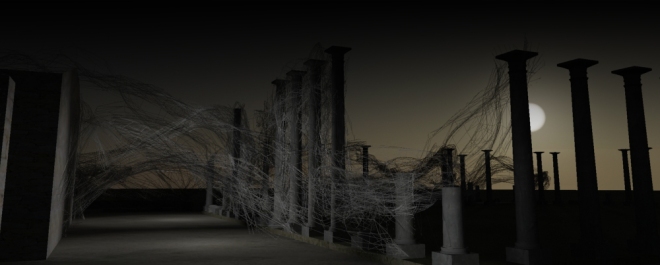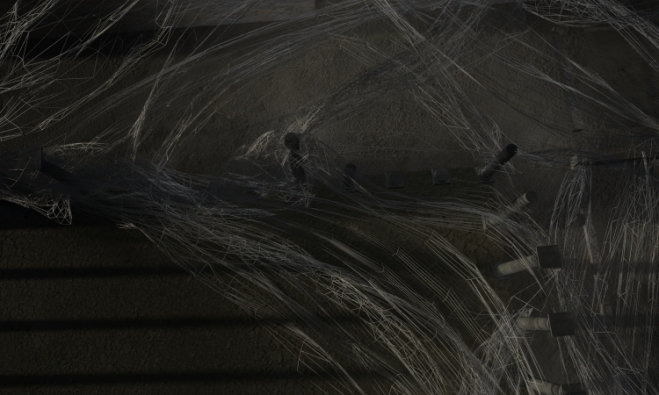Entry for the competition “In Cyprus -Relax, As Architects -Reinterpret”
+Brian Brush
Salamis is a Greek ruin city on the eastern coast of Cyprus. People come from all over the world to see the stone columns and brick walls of antiquity, preserved, petrified, and frozen in time. They come to witness that which was and will never be again; a prototype of the passage of time. For some, the contemplation of this passage is a marvelous mental recreation of the past; conjured images of Greek philosophs and Mediterranean Sea traders walking stone streets, the sound of bronze and ceramic clamoring in carts. For this visitor, the site of a historic ruin is like a virtual cultural tour, where the old is not simply old; it’s meaningful, evocative, and reminiscent. Reinterpreting contemplation is less about changing exactly what or how someone contemplates a historic object. It’s more about creating something that gives reason to pause, to question, to tilt one’s head to the side out of curiosity and ask why; it’s not to shock.
This project wraps the gymnasium at Salamis within a dense canopy of flowing, metal wires welded together to create a three-dimensional man-made web. It takes inspiration from cob webs found in nature, a back yard, maybe even an attic, not only for a web’s geometric interest, but also for the symbolic value cob webs possess culturally. In one moment the web intends to penetrate the petrified scene, dragging the frozen time of the past up to the dynamic time of the present in a material contrast of stone primitives and metallic meshes. In another, however, it pushes perception of history; how can such a historic object be encrusted by something so new, something that, although new, is evocative of something that usually forms in places time (but not nature) has forgot?
Reinterpreting contemplation of the historic object is about creating cause for a change of perception that questions that assumption of history. Contemplation is no longer of what the object represents or what information history has passed on to it, but rather it’s of what the object is, in and of itself in front of your eyes and within your hands.
The Salamis Web is realizable by a combination of handicraft and computational construction administration. The entire web contains 24 web clusters. Each cluster is composed of welded metallic strands and is divided into cubic segments, anywhere from 10 to 30 in number, 45cm x 75cm x 45cm. Each cube is a three dimensional slice of the web cluster such that it contains a cross-sectional portion of all the metallic strands that pass through the particular cluster and that particular cube.
The strands pass through the cube and intersect with two opposing cube faces. The two faces are subdivided by a Cartesian matrix that gives xy location data of where each strand intersects with the face. Therefore each strand of each cluster is associated with precise sectional information to be used in fabrication: strand ID, cluster #, cube segment #, faceA xy-position, faceB xy-position, strand length. All of this information is extracted via script in the virtual model and is exported to an xml database to be used as a “cut sheet” or “strand schedule.” The strands are then assembled in a jig or box similar to the cube diagram and welded into position. Multiple cubes are then assembled and welded again to form the entire cluster.






